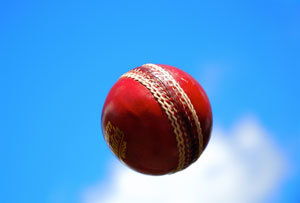
Source: Ball, Tc7, Flicker
Physics provides an opportunity to observe quadratic functions in a contextual situation. First, explore vertical motion in order to understand initial velocity. A person throws a ball straight up into the air and catches it while someone else times how long it takes the ball to return to the thrower's hand. (If possible, try this activity yourself.)

Source: Ball, Tc7, Flicker
It is important to note we are only studying vertical motion in this example. We will ignore any side to side drift. If air resistance is ignored, then the presumption is that the ball leaves and returns to the thrower's hand at the same speed or velocity. We can use this important fact to calculate the initial velocity of the ball.
The following link will open a window that shows you how to determine the initial velocity of your ball.
From physics we have g = v sub f minus v sub zero over t vf − v0 t , where g is the acceleration due to gravity, -32 ft/s; vf is the final downward velocity; v0is the initial upward velocity; and t is elapsed time. Since we are assuming the ball leaves and returns at the same speed, we can also assume vf = -v0.
In other words, if the initial upward velocity was, for example, 100 ft/s, the final return velocity would be -100 ft/s.
Now, find the initial velocity of the ball: Since g = -32, t = 3.58, and vf = -v0, our equation changes to:
g = negative v sub zero minus v sub zero over three point five eight -v0 − v0 3.58
-114.6 ≈ -2v0
v0 ≈ 57.3 ft/s

On your own sheet of paper or in your notes, take notes on how to find the initial velocity since you will use this information in the next section.